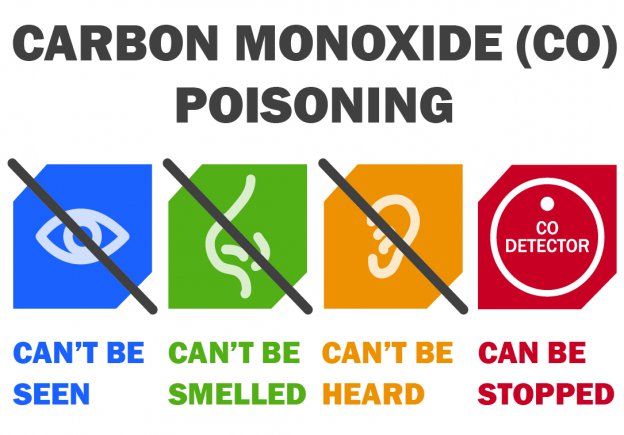Everything About CO – Carbon Monoxide
CO is a harmful gas; it can influence well-being. If severe, it can prompt unconsciousness and even death. Lethal in seconds. To get more information about this substance, consider the information provided below.
Overview of CO
What is CO?
CO is the chemical formula for Carbon Monoxide. This colourless, odourless gas is highly readable and combustible.
Some uses for carbon monoxide.
Although CO is a toxic gas, it has many applications in the fields of industrial chemistry, food, medicine, metallurgy, … Specifically:
In industry, Carbon monoxide is utilized to make cleansers.
In food varieties, they are used in air bundling frameworks.
In medication, carbon monoxide is a synapse that is one of three flammable gases that control the provocative reaction in the body (nitrogen oxide and hydrogen sulfide).
In addition, this gas can be combined to form drugs, such as anti-inflammatory drugs and vasodilators, and it can also encourage the development of cerebral vessels.
In metallurgy, CO is utilized to lessen metal oxides. Furthermore, numerous different applications….
Source of CO
There are many sources of carbon monoxide. It is generated when fuels such as gas, coal, firewood, gasoline, and oil are incompletely burned, especially when the fuel is burned without air and oxygen.
Carbon monoxide also exists in significant amounts in tobacco smoke. In the home, CO can be generated from fuel sources such as gasoline, oil, gas, or wood that do not burn off and in equipment that uses them as fuel, such as motorcycles, cars, heaters, and stoves…
Worldwide, thousands of people die every year from the inhalation of CO. Among them are mainly workers working in extreme conditions, such as environments with a lack of clean air and environments with a high risk of fire and explosion, … Such as mining workers, firefighters, even astronauts, and divers.
CO poisoning
CO is a toxic gas
Carbon Monoxide is extremely dangerous. If excessive amounts of CO are inhaled, it can lead to hypoxia damage in the blood. Or damage the nervous system. It can even cause death because as little as 0.01% of carbon monoxide in the air can be fatal.
Because a person inhales CO into the lungs, the carbon dioxide in the bloodstream combines with the red blood cell pigment (haemoglobin) to create carboxyhemoglobin (HbCO). This pushes oxygen out of the red blood cells. Because CO has a 200 times stronger affinity than the oxygen in red blood pigment, oxygen is eliminated, leading to a lack of oxygen, which causes asphyxiation very quickly.
But CO is an invisible, odourless, and inaccessible substance. Therefore, it is difficult for humans to feel its presence in the air. We can only feel when there are symptoms of poisoning.
Symptoms of CO poisoning
Carbon monoxide poisoning usually starts with a feeling of dizziness and a headache, … After that, you may feel nauseous, have difficulty breathing, and then slowly sink into a coma. More dangerously, if you get CO poisoning while sleeping or drinking, you will go into a gradual, undetectable coma. They can stop breathing and lead to death because they are not detected and treated promptly.
Severe or mild CO poisoning depends on the toxic concentration in the air and the time of exposure. It also depends on the state of the body, the circumstances of the workplace, and…
Pregnant women, alcoholics, people with cardiovascular diseases, chronic bronchitis, asthma, anaemia, malnutrition, poor resistance, … are the subjects that can be affected. Serious. Be wary of travelling to places where this may be hazardous.
The stages of CO poisoning
Mild stage
Health experts say CO poisoning has similar early signs to a cold but does not include a fever. Some symptoms include headache, dizziness, slow movement, weakness, and nausea.
Moderate poisoning
Moderate CO poisoning, victims see severe headaches, dizziness, nausea, abdominal cramps, diarrhoea, numbness in many parts of the body, and fainting;… This poisoning level is prolonged.
In case the victim is poisoned, the concentration of CO gradually increases, and the manifestations also increase:
If the amount of HbCO is increased from 10-20%, it will cause headache, vomiting, and difficulty breathing
If the HbCO concentration is 30-40% high, there is severe headache, tachycardia, and loss of consciousness. When the amount of CO is over 40%, the breathing will be fast, choking, or stop breathing, then the victim will convulsive, unconscious, permanent brain damage, the heart stops beating and dies.
Especially remember: although the amount of HbCO is as low as 0.05% in the blood if inhaled for more than 30 minutes, it can also cause death.
Severe CO poisoning
Acute poisoning can cause vomiting, shortness of breath, confusion, blurred vision, and loss of consciousness. In a critical case, the victim can die if the emergency is not timely. Suppose you notice any of the above symptoms. In that case, it is necessary to immediately take the victim outside to breathe fresh air and then take them to a medical facility for treatment.
Potential risks of carbon monoxide poisoning from cars
As we all know, the internal combustion of cars and motorcycles is the chemical reaction between fuel and air. The fundamental fuel utilized is petroleum and diesel). Petrol and diesel are used as significant fuels. However, when air is introduced into the combustion chamber during each cycle, the fuel may not wholly burn and produce CO if there is insufficient oxygen to react fully with the fuel.
Therefore, the old cars used primitive fuel injection and suction technologies to prevent the amount of ivy from burning. From there, the waste gas has a high CO content.
In particular, the air conditioner will take the wind to bring CO in in enclosed spaces such as a car cabin. Therefore, humans will directly inhale CO. In the absence of timely detection and treatment, the driver can fall into a state of coma, even death.
Prevention and treatment of CO poisoning
Ways to prevent CO poisoning
The best way to control CO poisoning is to take the following precautions:
Keep away from closed garages where machines are in operation.
Regularly test and properly maintain your water heater, gas stove, heater, or any gas, oil, and coal appliance in your home.
Install CO alarms in the home and the workplace.
Only buy gas appliances (gas stoves, fireplaces …) from reputable companies.
Check and clean chimneys every year.
Never use gas or stoves for heating, as they can build up CO in your home.
Never burn coal indoors because coal will produce CO.
Never use a generator in your home, basement, and garage or less than 6 meters away from windows, doors, or vents.
Avoid placing water filters & food items near a gas stove, heater, or any gas appliance in your home.
Use an air cleaner indoors or in your car.
In addition, people need to take steps to prevent CO poisoning, such as not going into shallow wells, wind-tight deep holes, reservoirs, tanks, drums, and tanks which have been left dry for a long time. To get down to such places by work, ventilation measures should be taken before descending. For example, you can use an electric fan to fan the air to the bottom of these places for a few minutes. In addition, when going to the test, a guard and support should be ready to ventilate or remove the victim from danger.
How to treat CO poisoning
If suspected CO contamination occurs, immediately remove all victims from the contaminated room and move to a well-ventilated area for breathing. Pay attention and open all doors and windows, turn off the gas stove, lock the gas tank or immediately turn off fuel-burning furnaces.
If the victim has a mild infection or little poisoning, it only takes a few minutes of breathing fresh air to heal immediately. Perform CPR, inhalation, and… In severe cases, a ventilator may be needed to bring oxygen into the body. If the victim’s breathing is weak or has stopped, immediately refer them to the nearest medical facility or call an ambulance while still doing CPR.
Another treatment is high-pressure oxygen therapy, which helps increase the amount of dissolved oxygen in the blood. Doctors use high-pressure oxygen therapy for people with carboxyhemoglobin levels 40% higher, those who are lethargic or unconscious, and pregnant women with 15% higher CO levels.
The above is some basic information about CO and its potential hazards. Hopefully, the above article will help you have the basic knowledge to prevent or protect yourself and those around you when you are poisoned by CO.

















